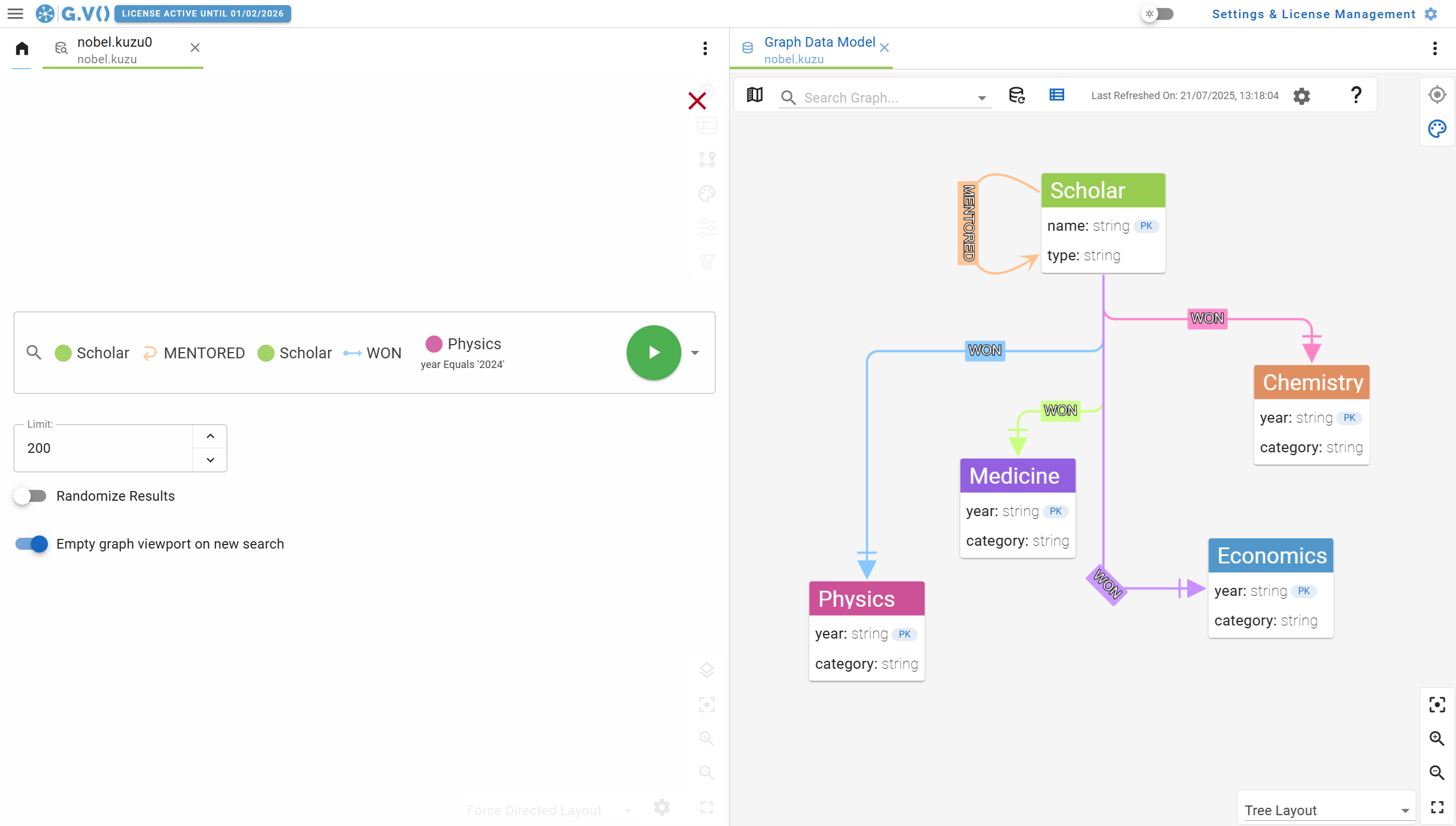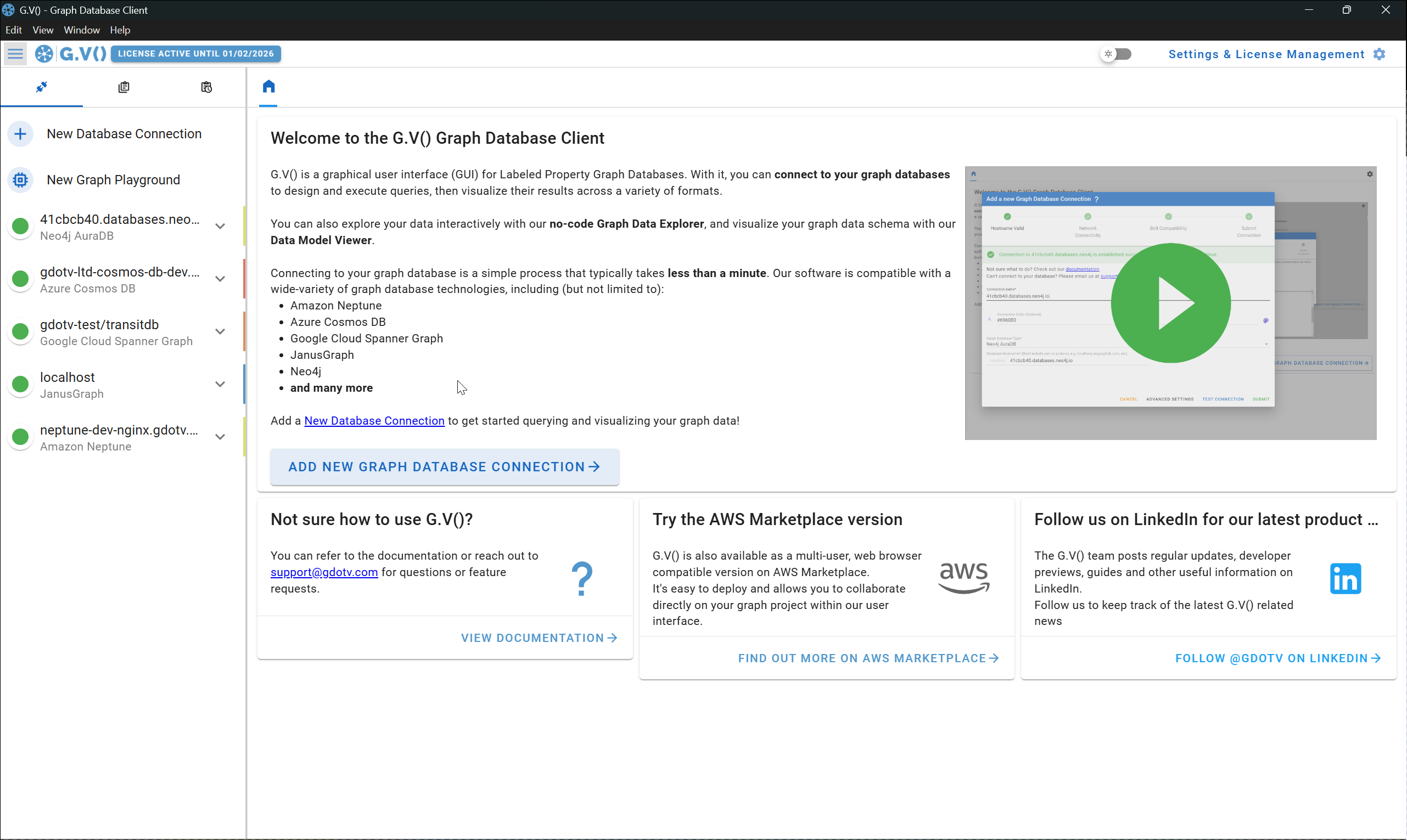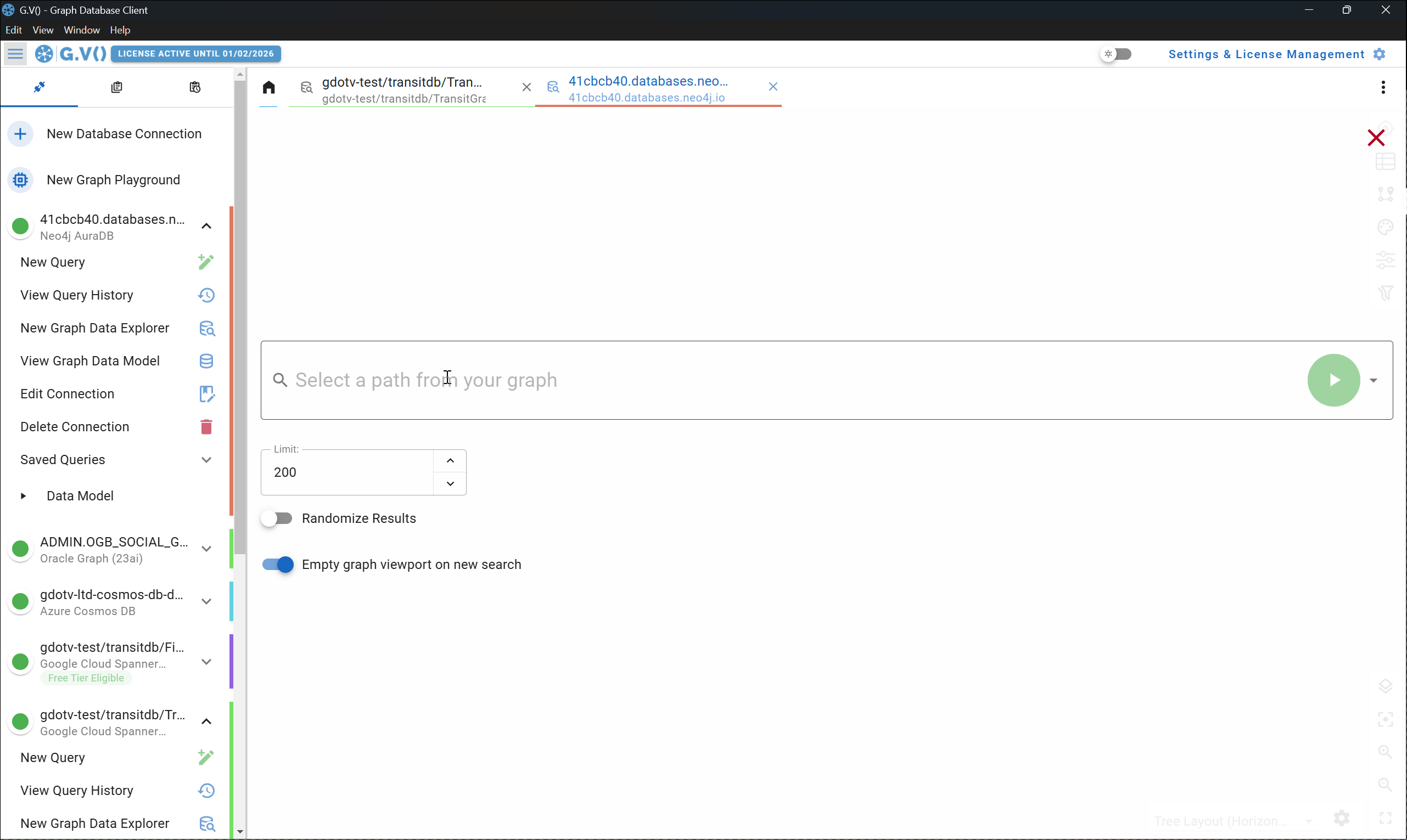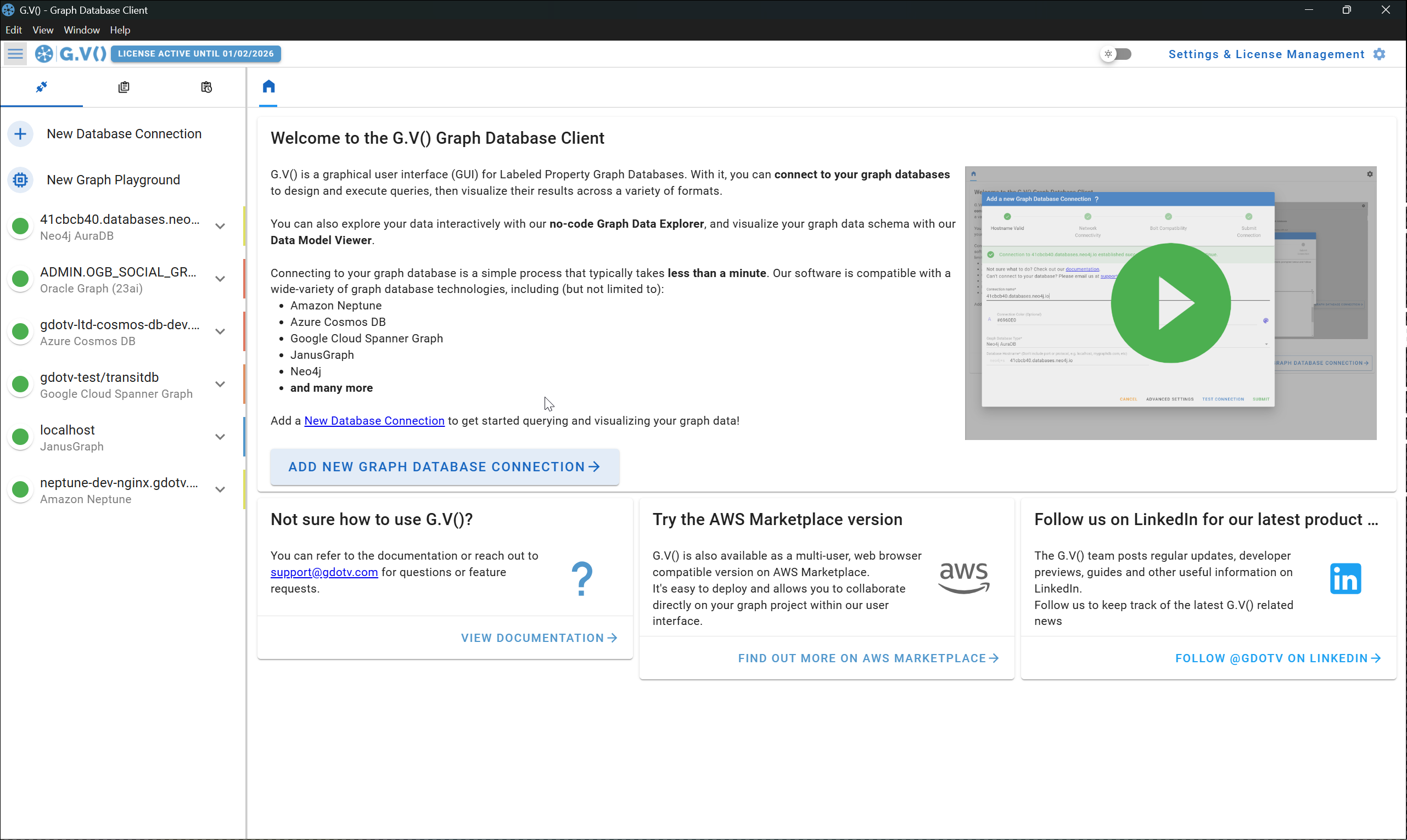G.V() 3.34.79 Release Notes: Oracle Graph Support, new no-code exploration, and more

Introduction
Oracle Graph Support

New and improved path pattern search capabilities
We’ve thoroughly reworked our graph data explorer to allow performing complex path pattern searches with no code. This new user experience is available for all the databases we support, and can be triggered from individual nodes in any graph visualization.
With it, you can define path patterns to query from your data, using a combination of node and edge filters. Elements in the declared path can be filtering according to their label, direction and property values. Here it is in action:

This is a big first step towards no-code capabilities in G.V(). Next, we’re planning to add advanced conditional expressions for filters (AND/OR logic) and pattern repetition configurations.
Kuzu 0.11.0 upgrade brings single file database storage
The Kuzu team has recently announced the release of Kuzu 0.11.0, bringing DuckDB style single file database storage, along with many other new features and improvements.
This new storage format brings significant user experience improvements to both Kuzu and allows connecting to your Kuzu database from G.V() even more seamlessly.
As this new release introduces a brand new storage format, you will need to migrate your Kuzu database to 0.11.0 to continue using it, as documented in their migration guide. You can then simply edit your Kuzu connection on G.V() by pointing to the path of your Kuzu database file.
As shown below, connecting to Kuzu 0.11.0 on G.V() is easy as 1-2-3:

In the next release of G.V(), we’ll introduce the ability to also upload these database files as copies, both on our web and desktop version. This will allow you to explore Kuzu data without needing to manage concurrency with other processes that may also access the database.
Improved Gremlin & Cypher syntax handling
We pride ourselves on delivering best in class query editing tools for the graph database languages we support. Following the recent release of Cypher25, we’ve upgraded our Cypher engine to support this new syntax.
We’ve also significantly reworked our Gremlin autocompletion engine to deliver better performance and accuracy on suggestions. One area of focus in this rewrite has been handling of nested traversal hints, which have historically been challenging to implement.
Our latest release introduces a fully functional autocompletion engine for nested traversal in Gremlin queries, making G.V() the most advanced developer tooling available to Apache TinkerPop users.
Single Sign On & User Federation on our web version
Everything else
This is not an exhaustive list (and look) at what’s featured in our latest release. In no particular order, here’s a few other features and improvements you’ll find in this update:
- Added schemaless data support for Google Cloud Spanner Graph
- Added CSV/JSON export functionality on vertex and edge tables
- Added support for Azure OpenAI private endpoints
- Improved query result processing performance
What’s next
We regularly post previews of upcoming G.V() features on LinkedIn | X | BlueSky, so make sure to follow us on social media to find out more.
Our next release, planned for late August, will feature RDF/SPARQL support, making G.V() the first IDE to work across both Labeled Property Graph and Resource Description Framework technologies.
We’re also planning to begin integration work with GQL-native graph databases with a view to release in September. There’s a lot of other cool stuff going on that we’re not quite ready to talk about yet – but as always we’ve got tons of cool new features cooking.
![The Weekly Edge: Linkurious Gets Acquired, CDL Wraps, Graph Benchmarks for TinkerPop & More [5 December 2025] The Weekly Edge: Linkurious Gets Acquired, CDL Wraps, Graph Benchmarks for TinkerPop & More [5 December 2025]](https://gdotv.com/wp-content/uploads/2025/12/linkurious-acquisition-connected-data-london-tinkerpop-benchmark-weekly-edge-5-december-2025.png)
![The Weekly Edge: Baroque Org Charts, AI & Graph Visualization, Graph DB Demos & More [28 November 2025] The Weekly Edge: Baroque Org Charts, AI & Graph Visualization, Graph DB Demos & More [28 November 2025]](https://gdotv.com/wp-content/uploads/2025/11/weekly-edge-graph-visualization-28-november.png)
![The Weekly Edge: Release of the Gremlins, Spotlight on Embeddable Graph Databases, & More [21 November 2025] The Weekly Edge: Release of the Gremlins, Spotlight on Embeddable Graph Databases, & More [21 November 2025]](https://gdotv.com/wp-content/uploads/2025/11/tinkerpop-release-graphlite-news-puppygraph-onelake-weekly-edge-20-november-2025.png)